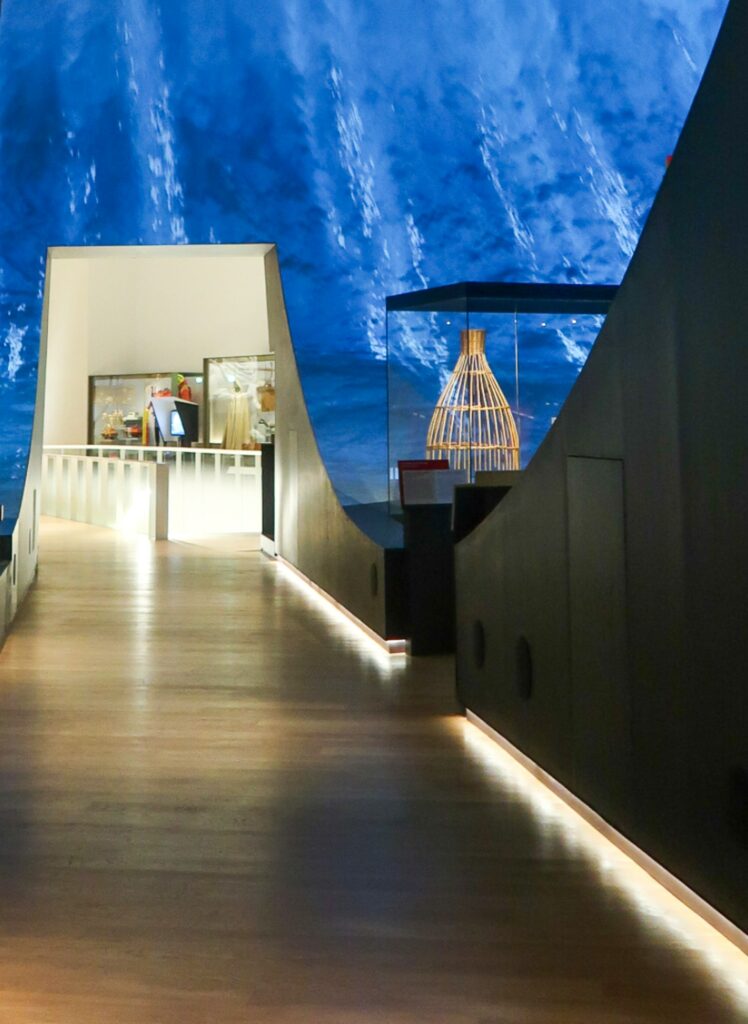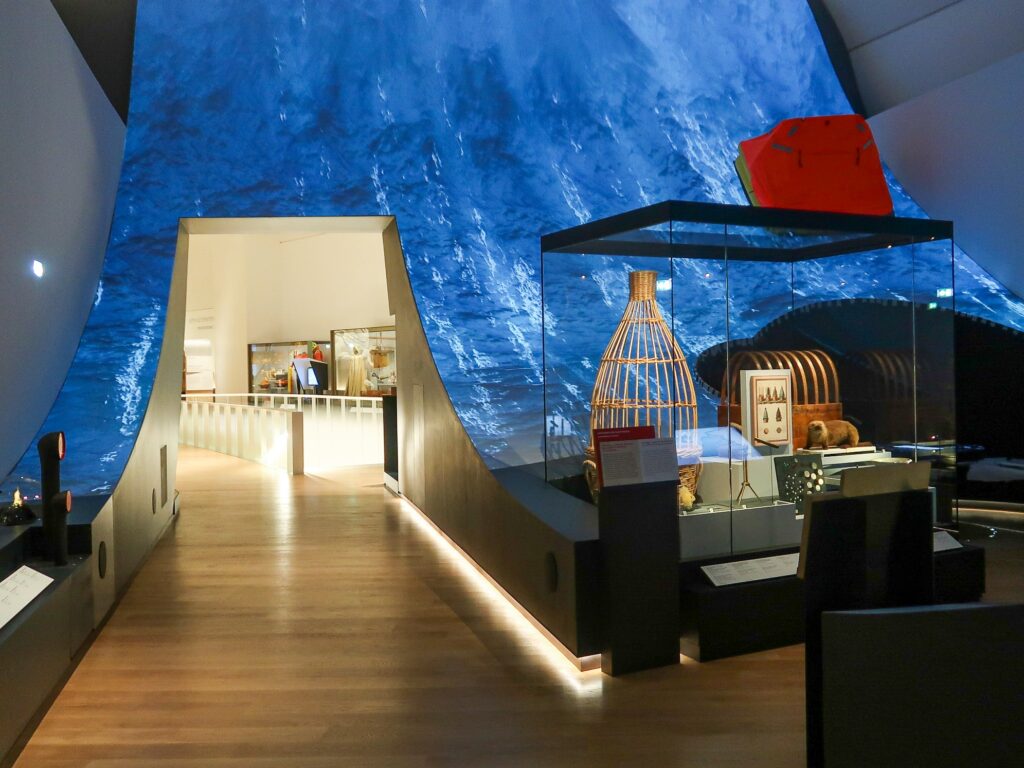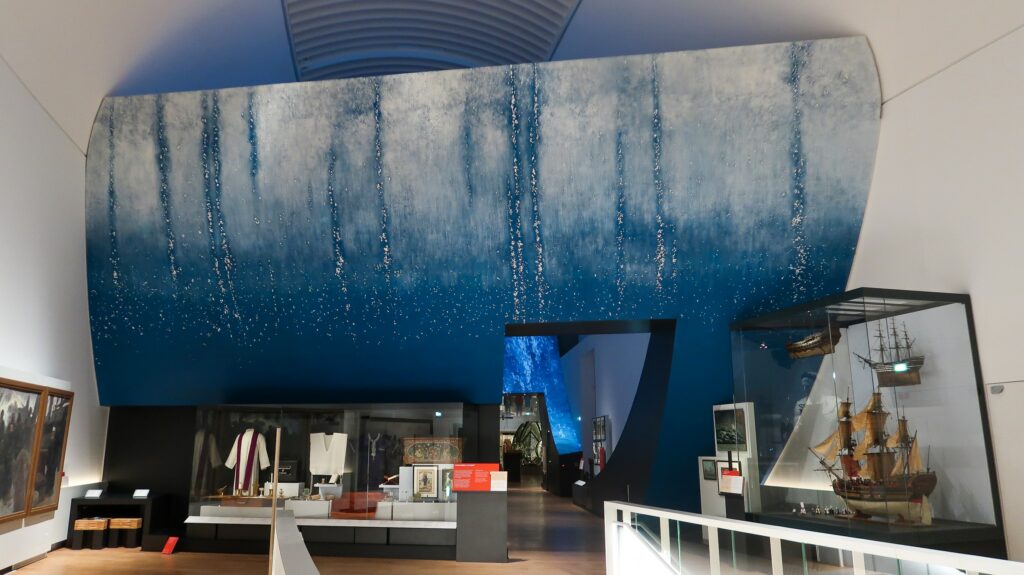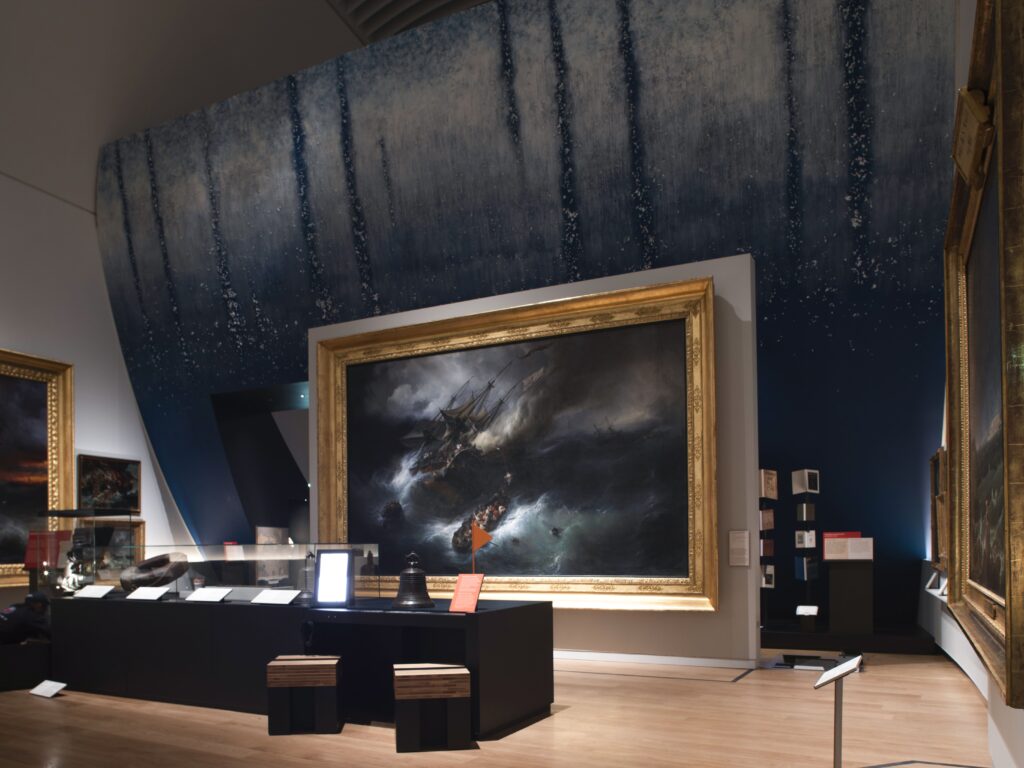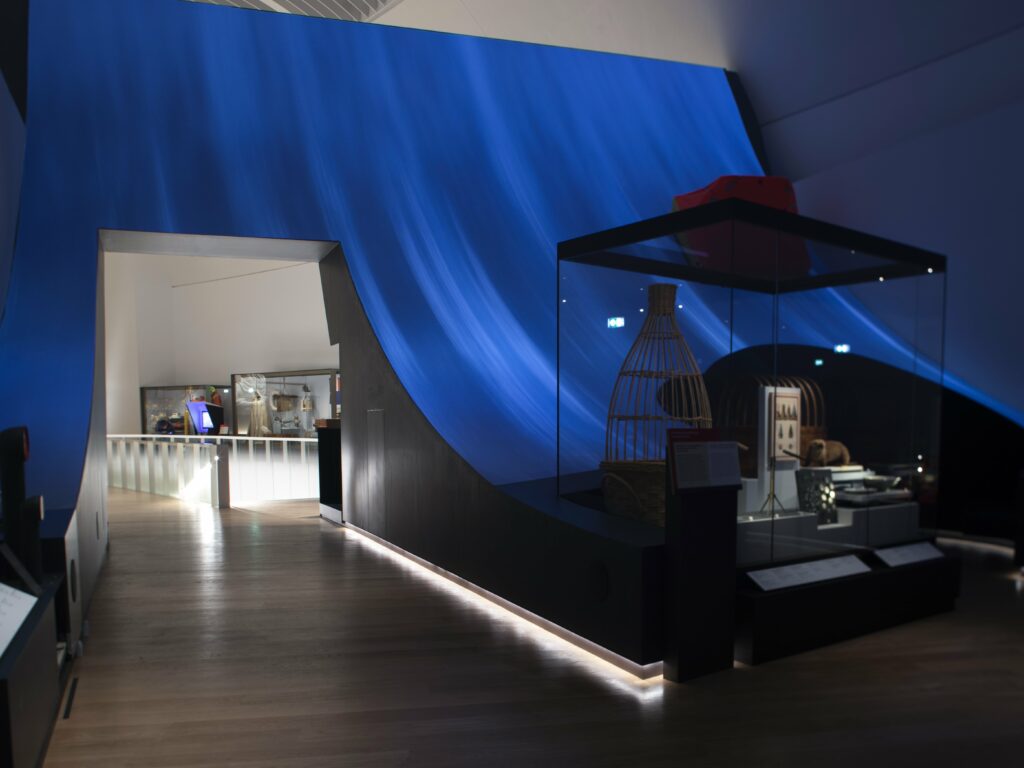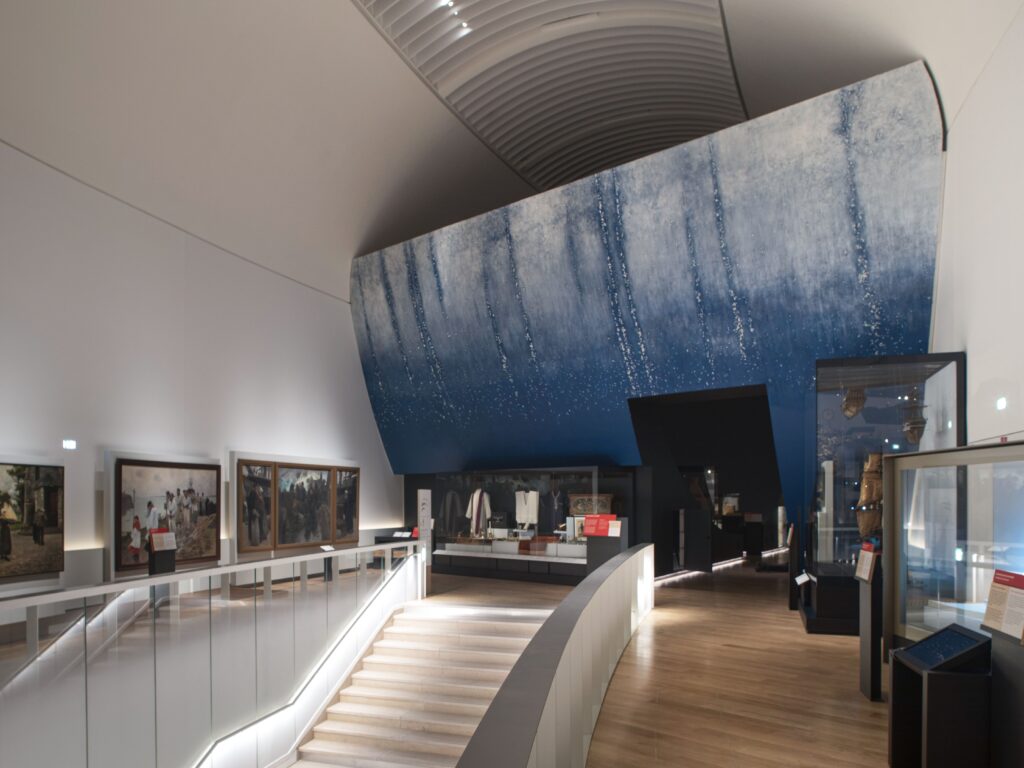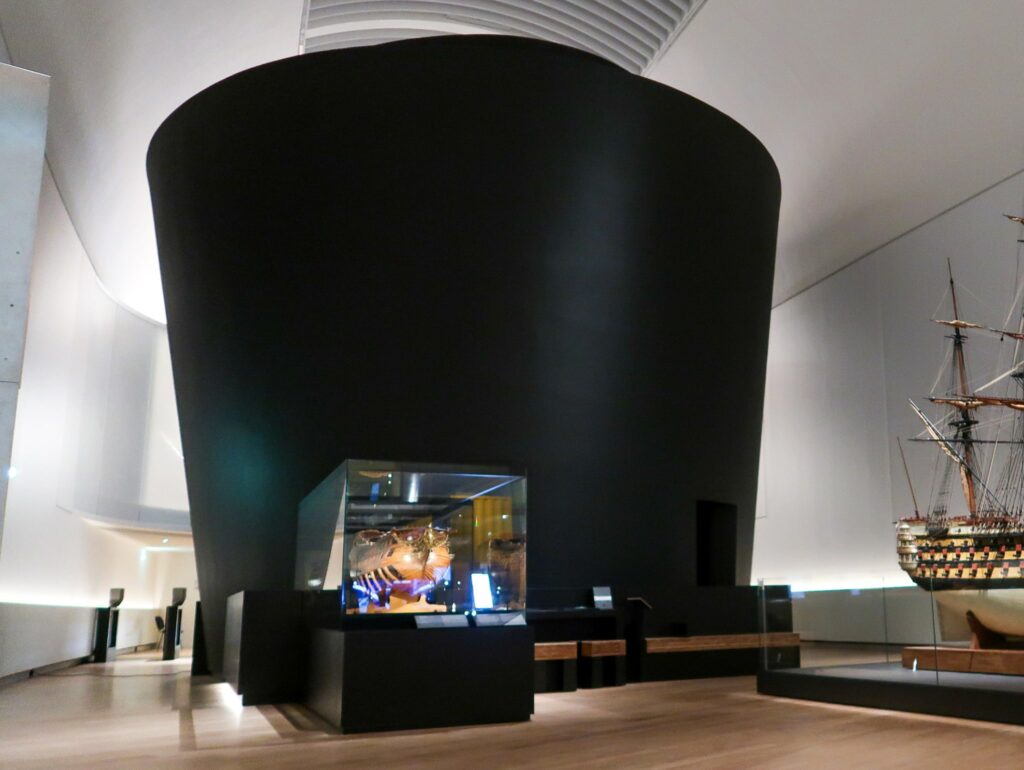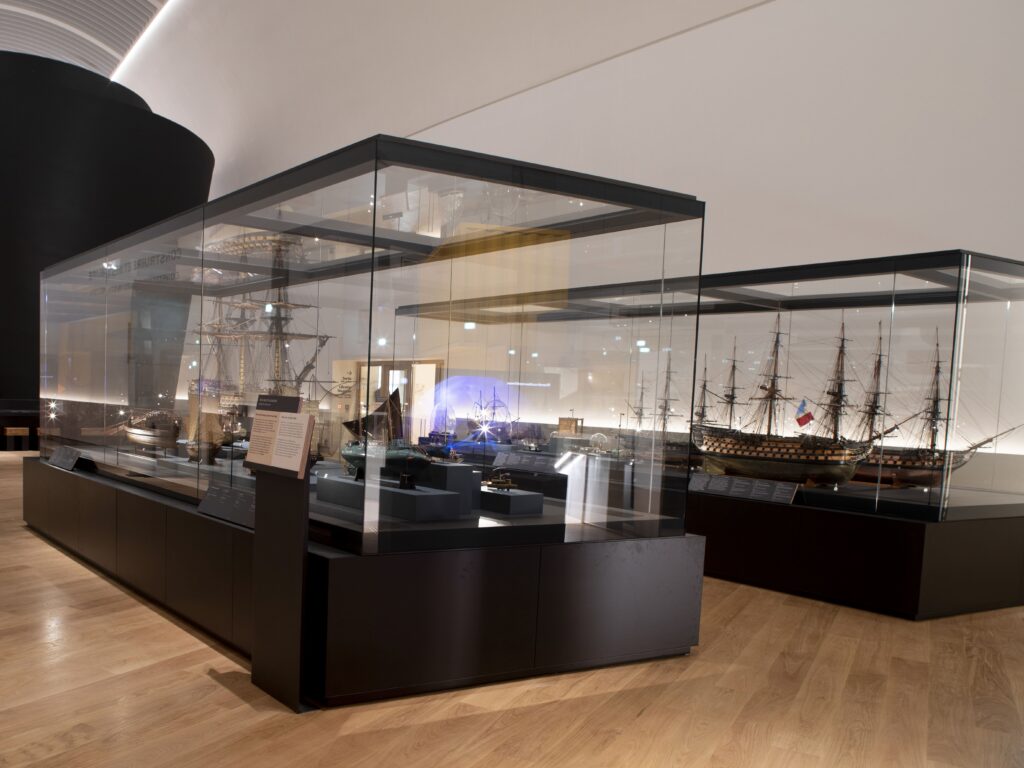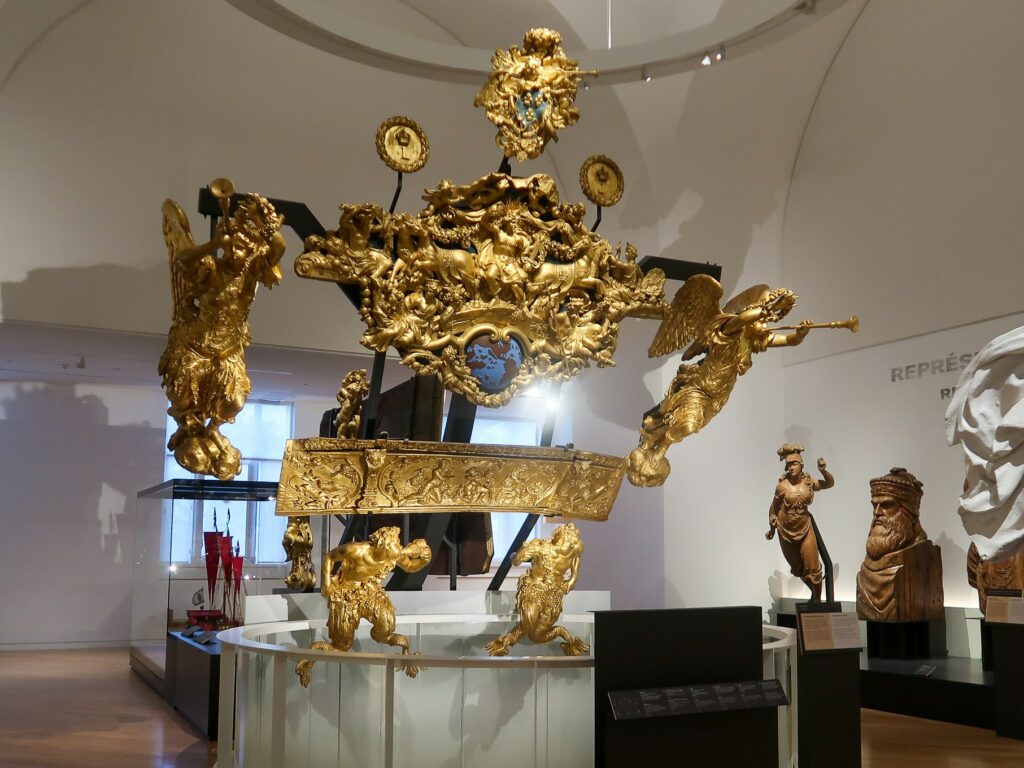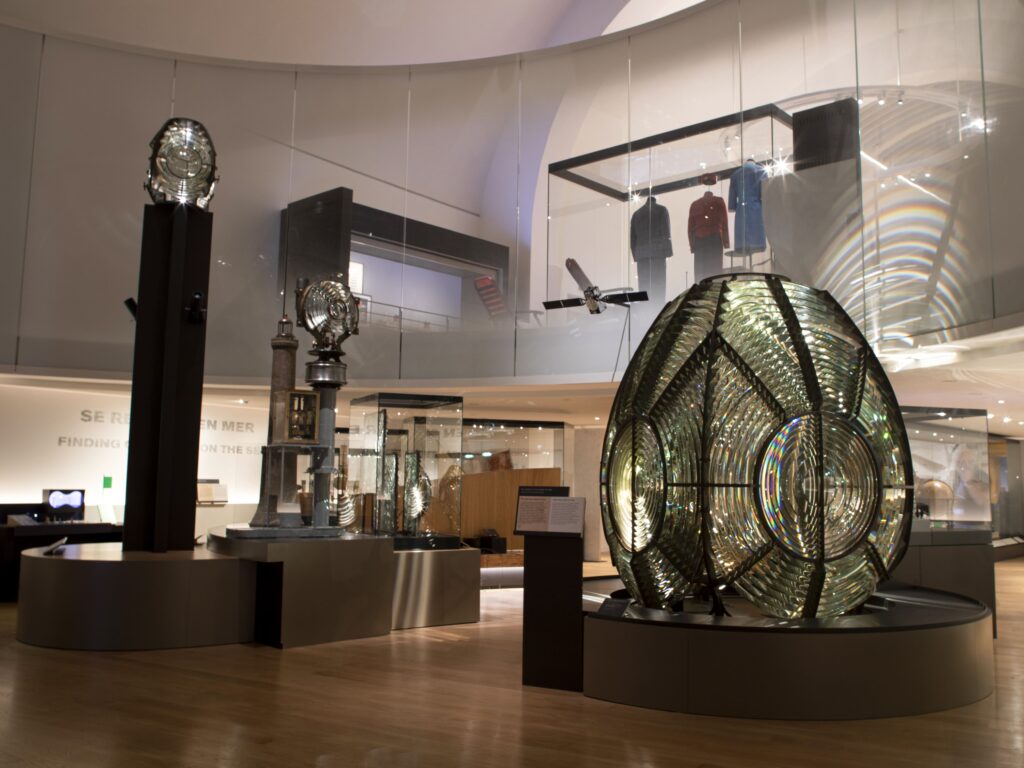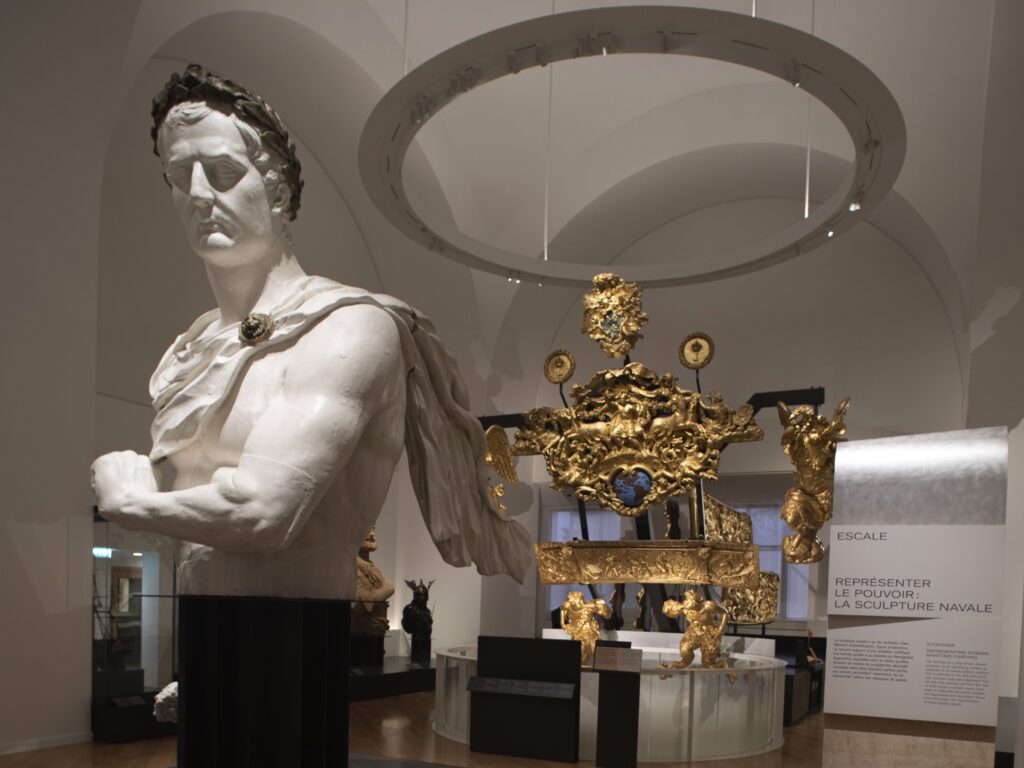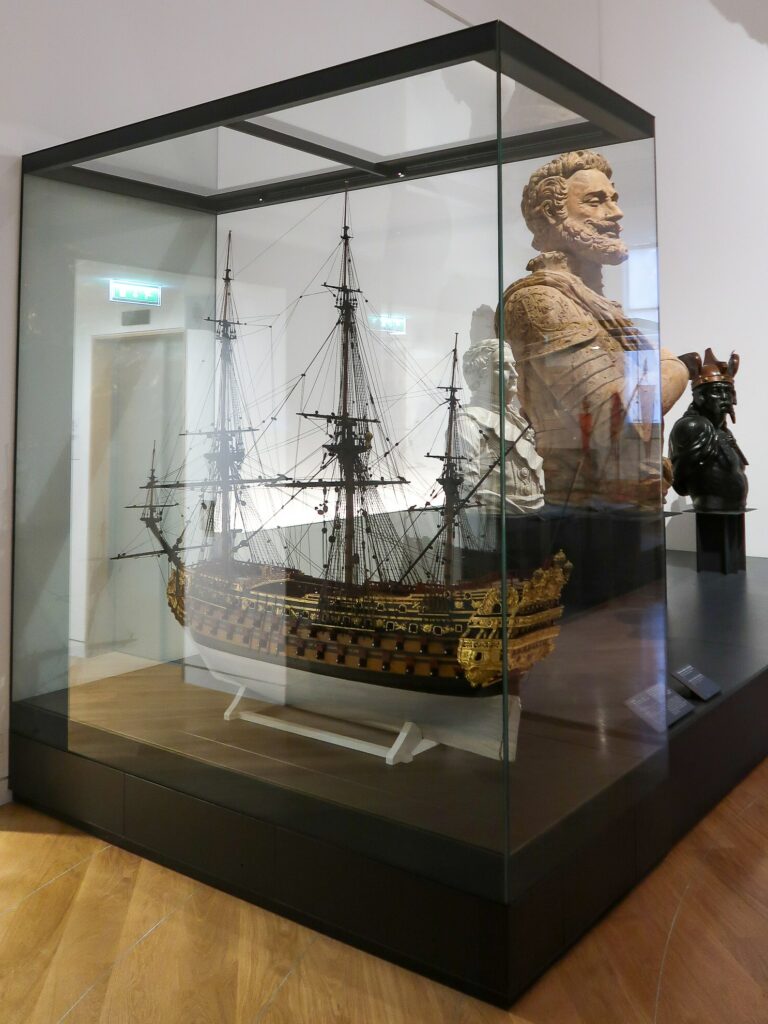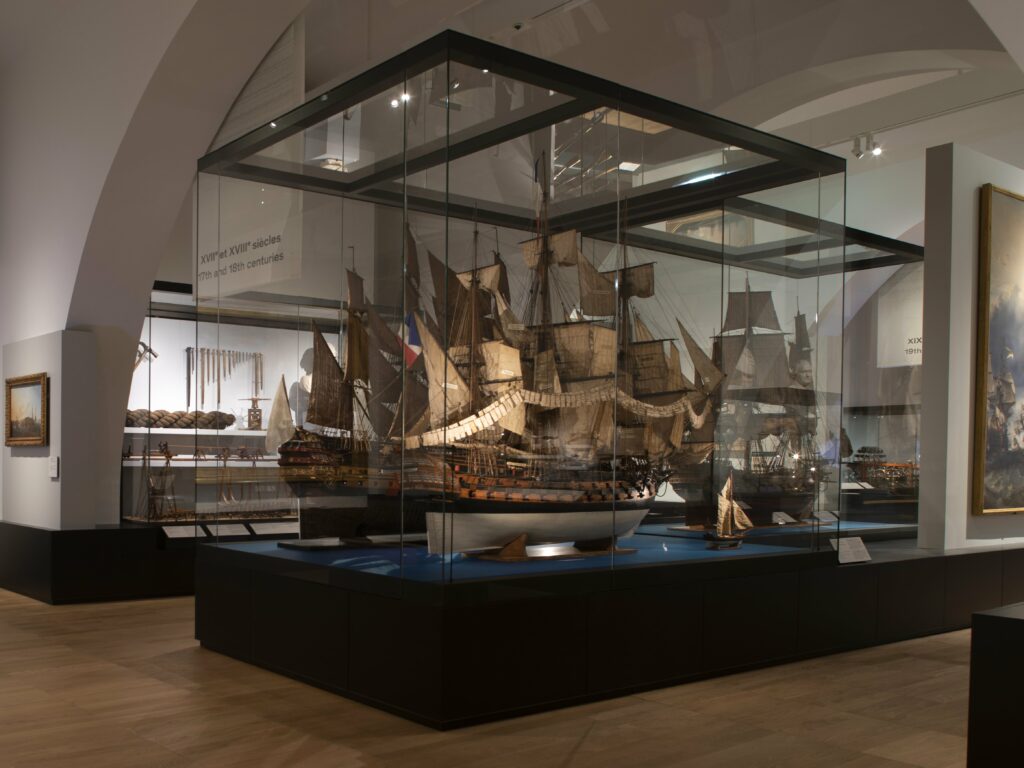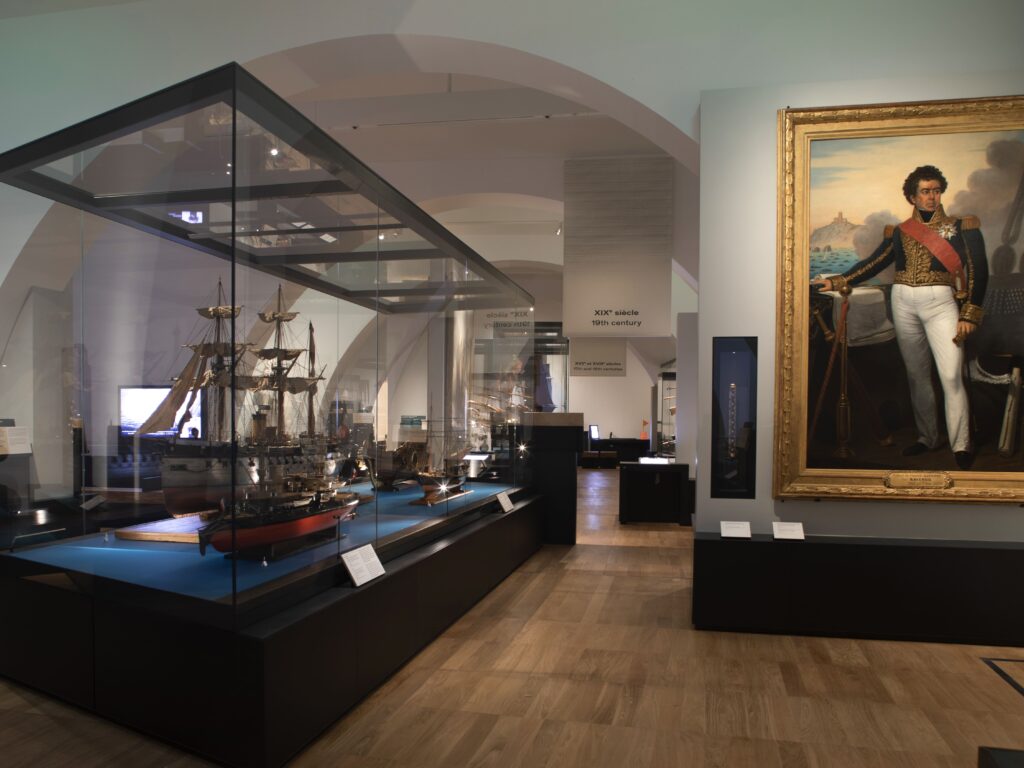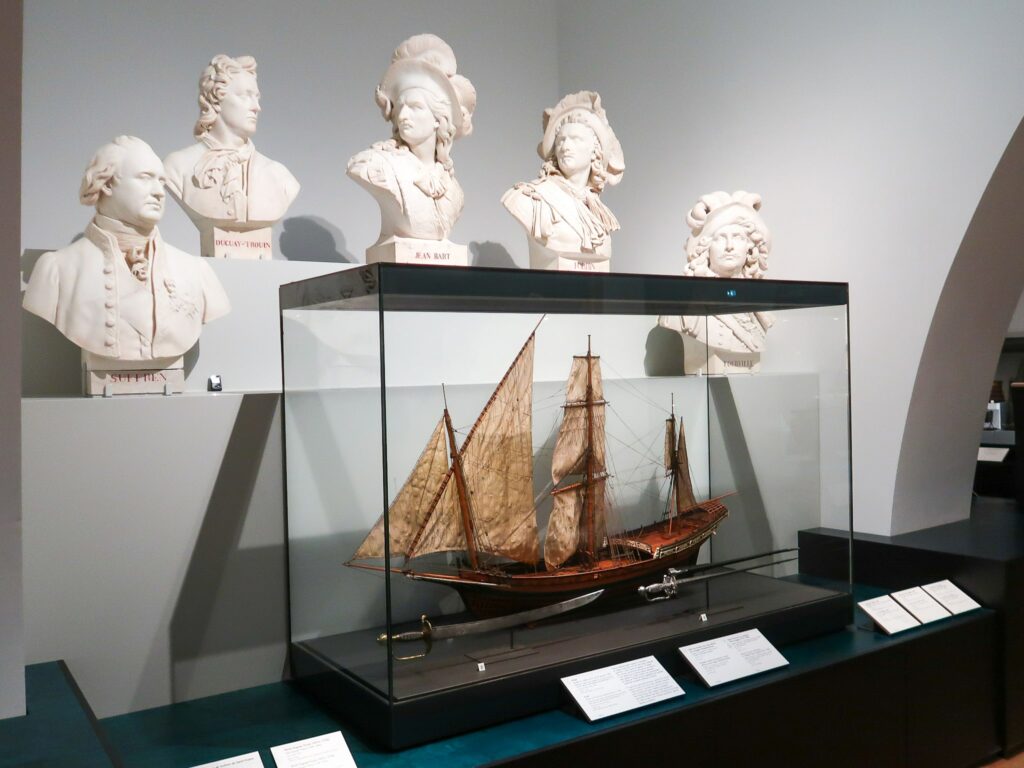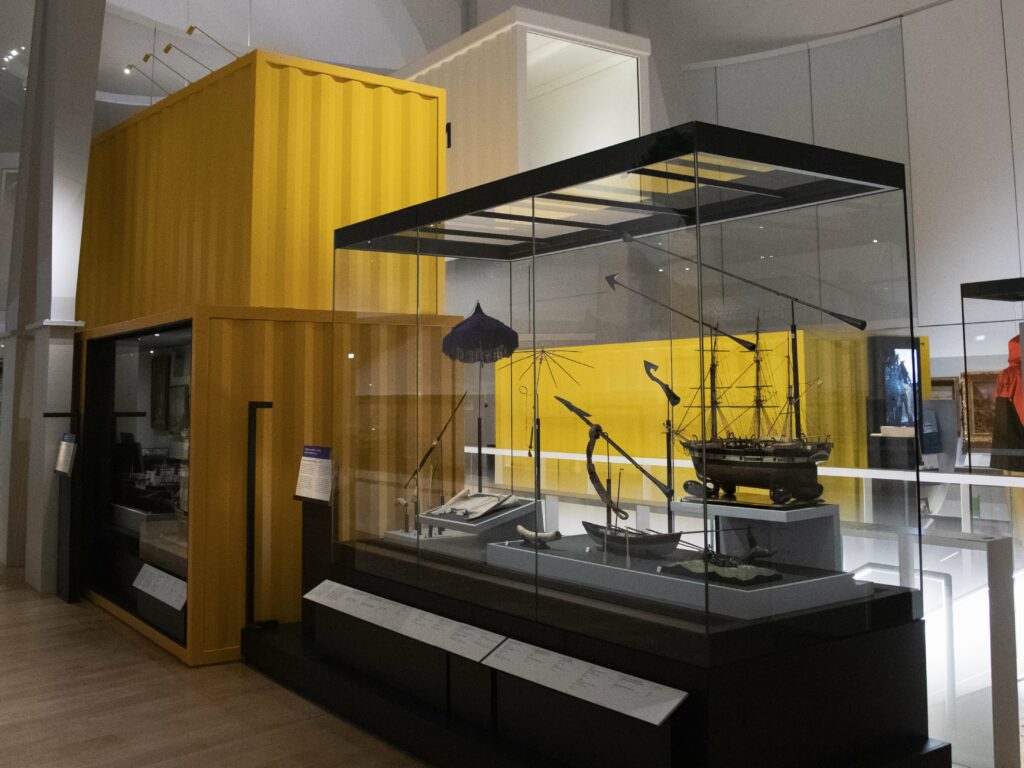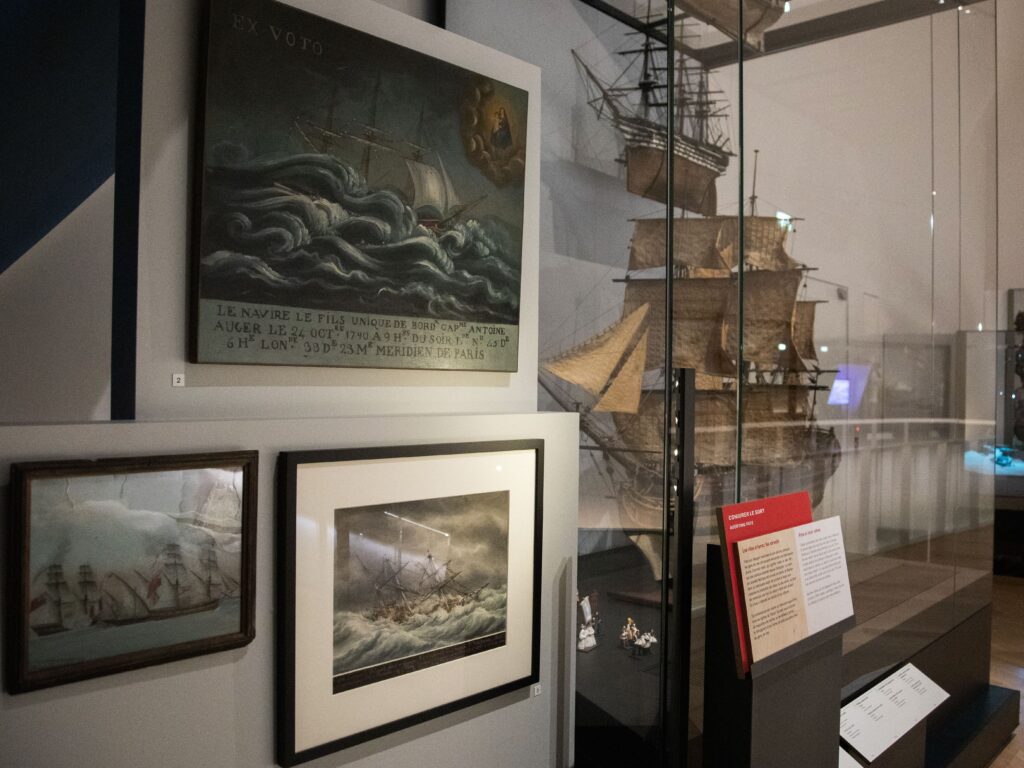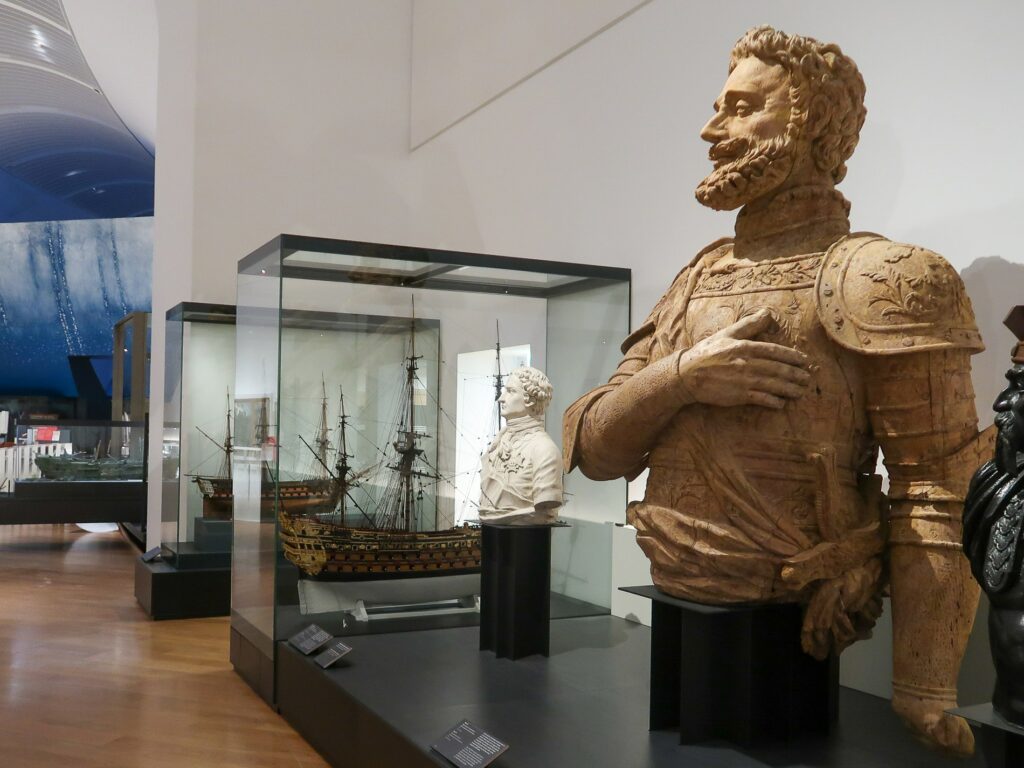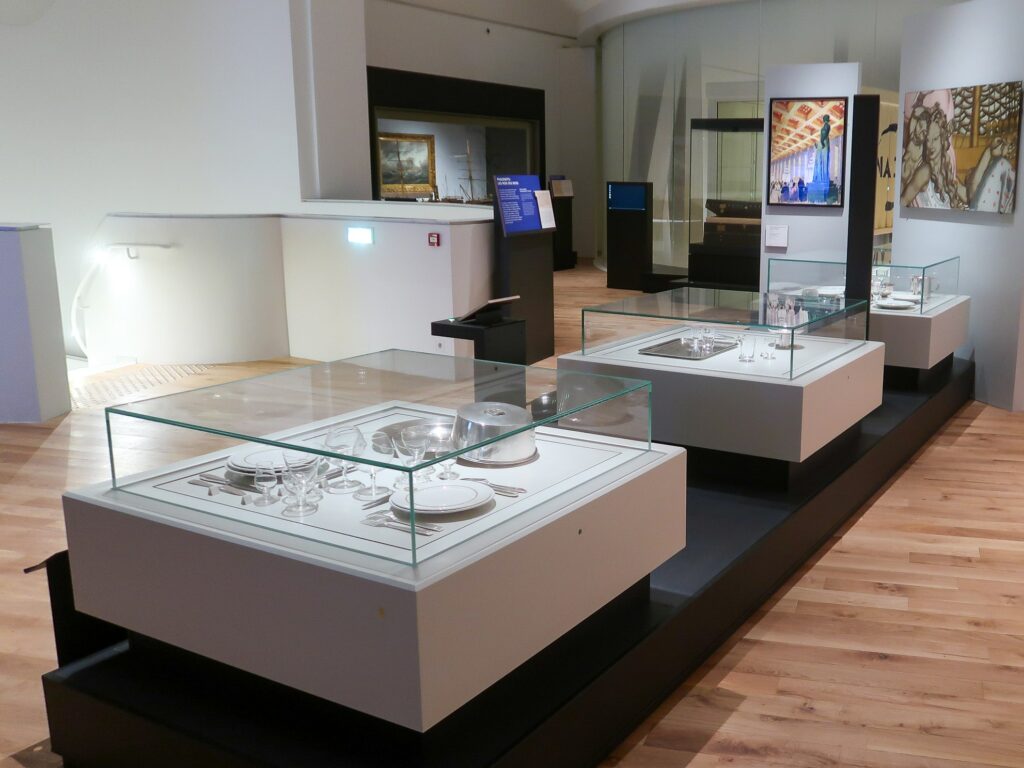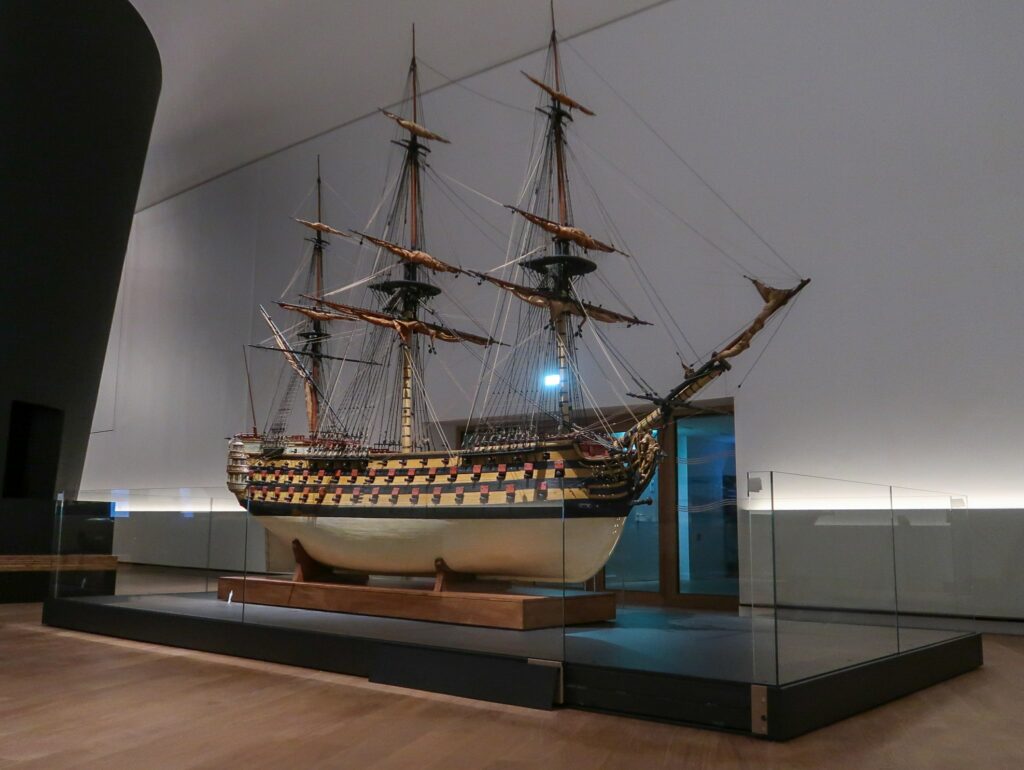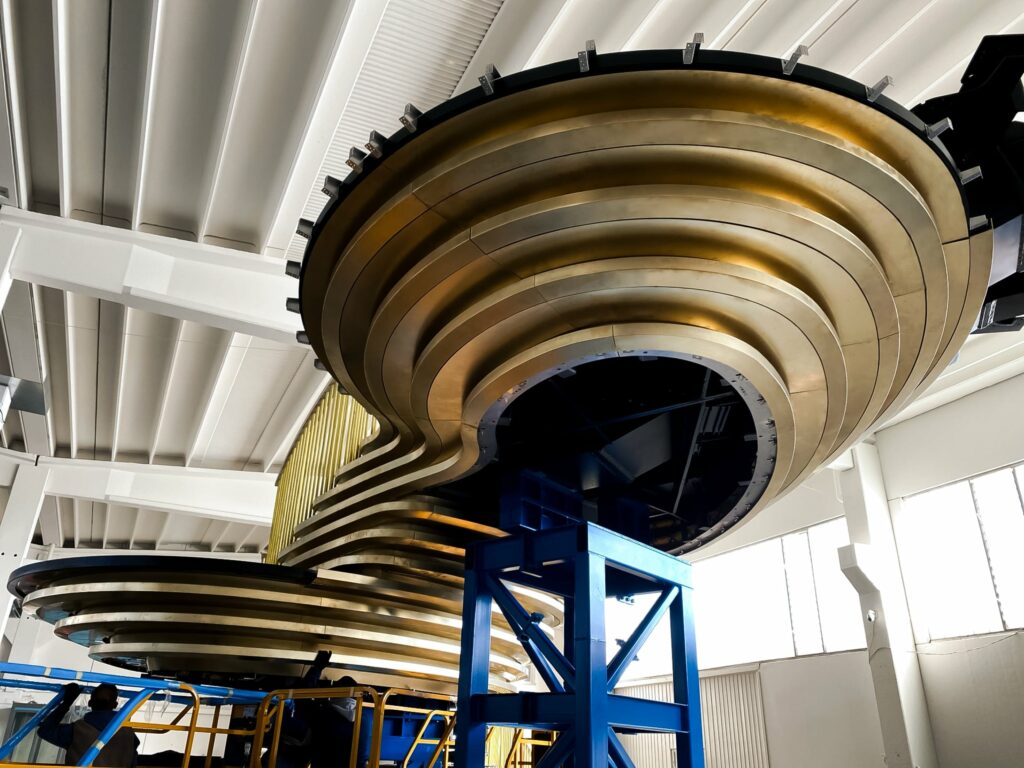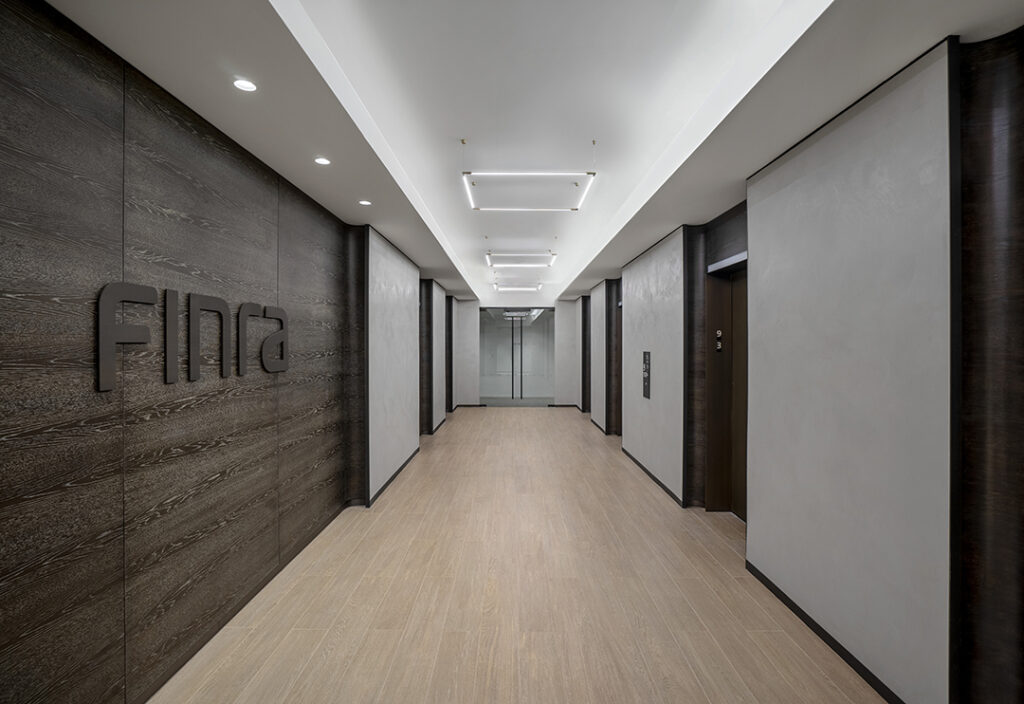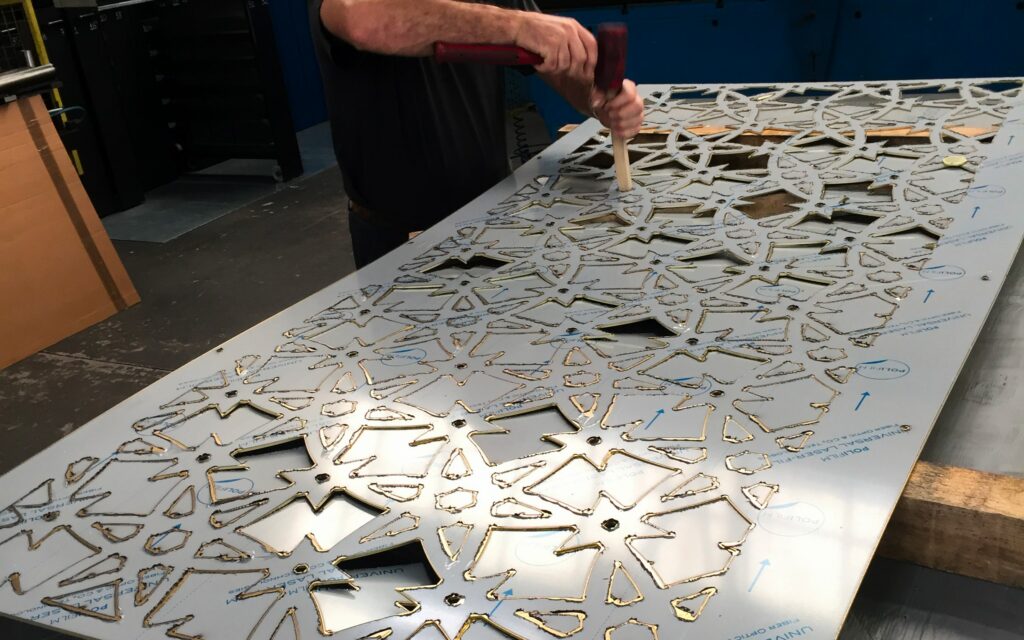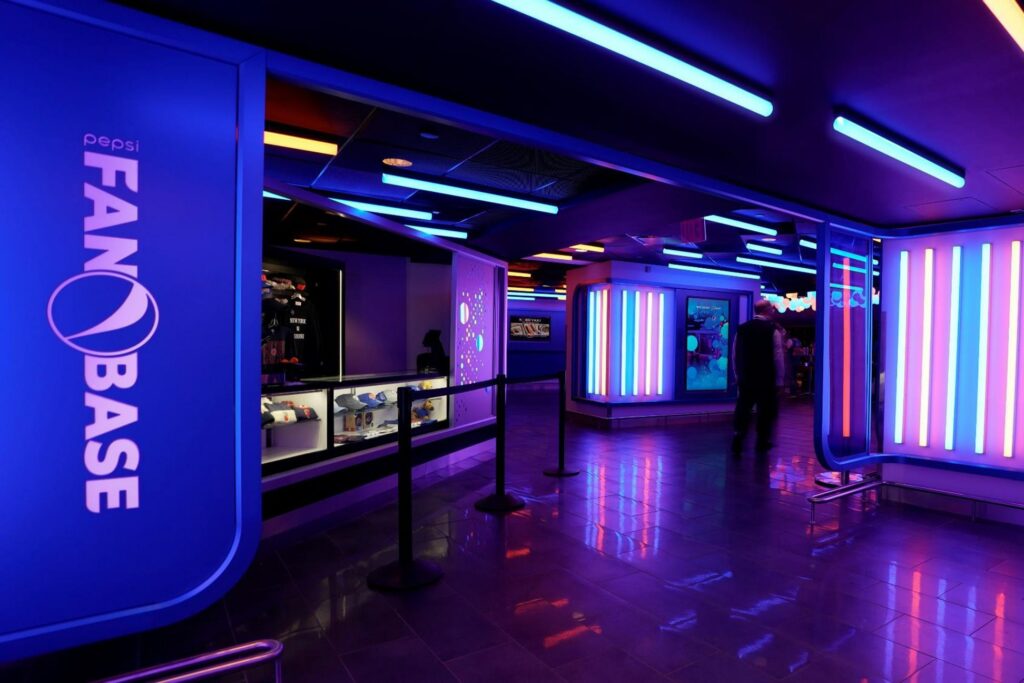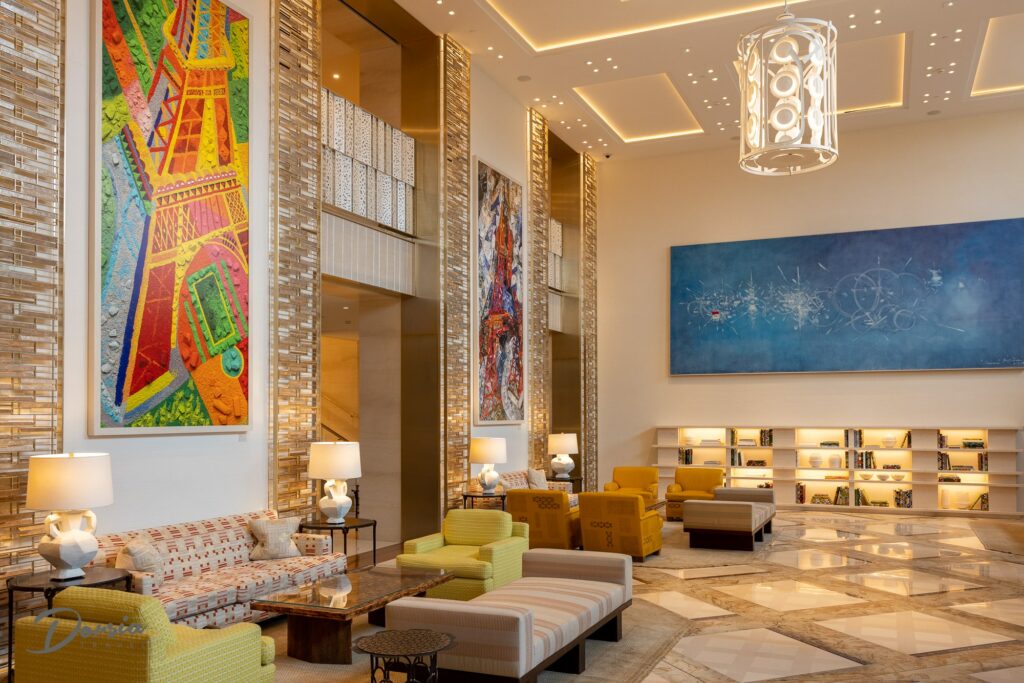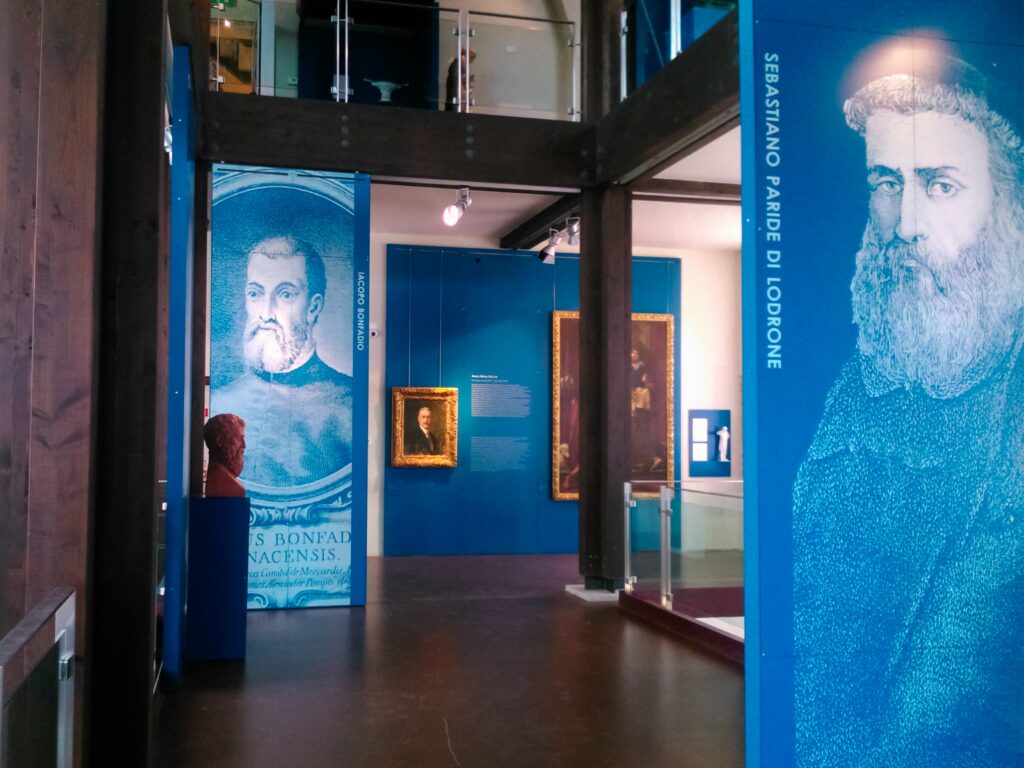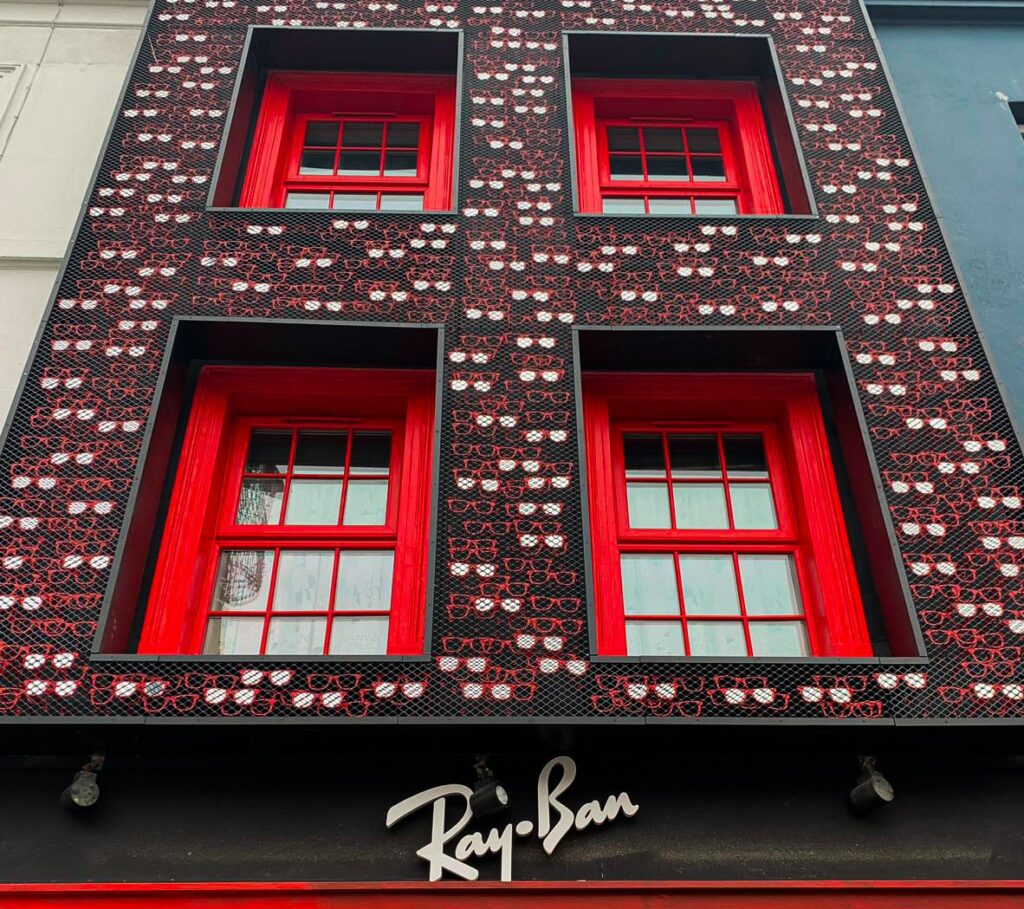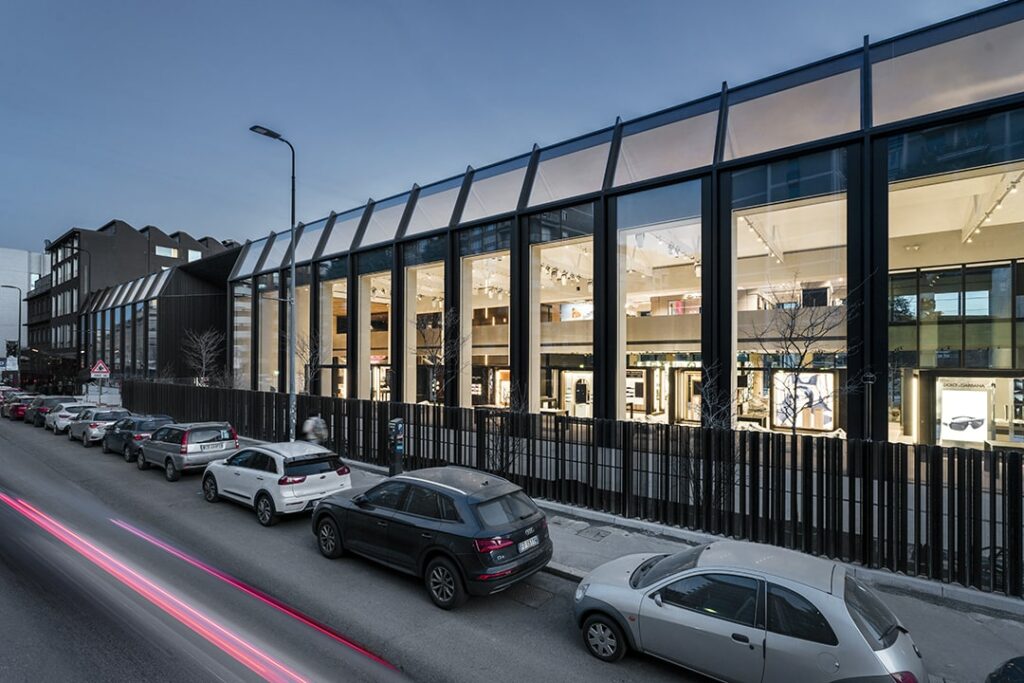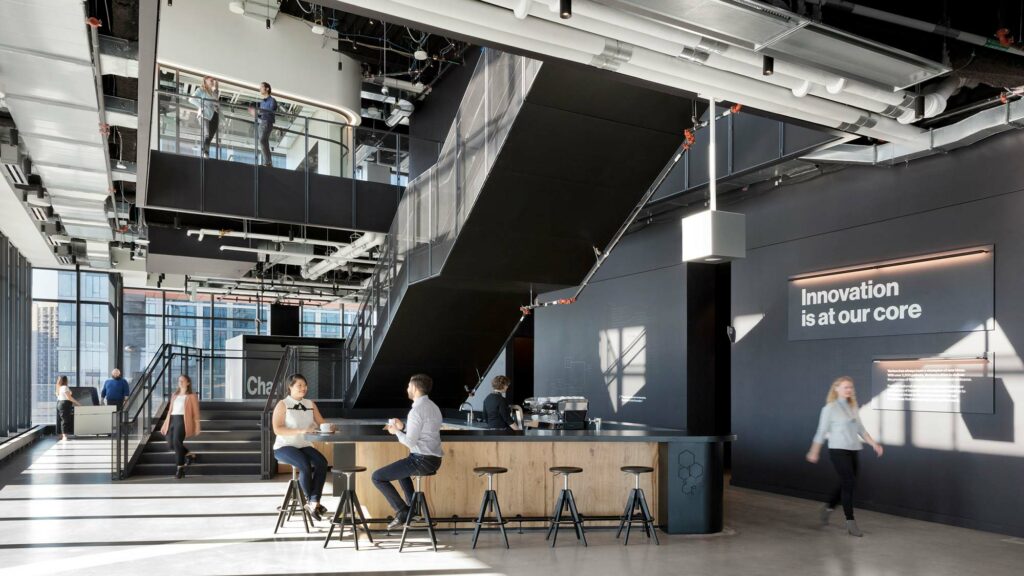Museum
Musée de la Marine – Paris
A museum of art, history, science, technology, human adventures and folk traditions
The Musée national de la Marine (National Maritime Museum) in Paris is housed within Palais de Chaillot, in Place du Trocadéro. Its new display is a surprising journey on land and by sea. This renewed space, vibrating with knowledge, is one of the oldest museums in France, founded under Louis XV more than 250 years ago. The restored collections allow for an innovative, multisensory journey, designed for visitors of all ages, from newcomers to long-term enthusiasts of the sea and sailing. The goal is to convey, to the general public, the historical importance of the French Navy through the worlds of the sea-faring men and women of yesterday, today and tomorrow.
Photo credits © Musée national de la Marine/G. de Carvalho
La Vague
A large, impressive structure made by Lamparredo: ‘The Wave’ is an immersive spectacle designed to inspire reflection, dedicated to storms and shipwrecks.
An interactive, lively place, dominated by an immense wave that transports visitors a thousand miles from the mainland. It addresses the topic of danger at sea through statements, records, monumental works and objects coming from famous shipwrecks.
La Coque de Bateau
The first element of the exhibition is a large structure made by Lamparredo, replicating the bow of a life-size ship. An immersive experience, characterised by a film projected on a large hemispherical screen, it extends over visitors and multiplies viewpoints.
Vitrines
Lamparredo has made most of the display cases, some of which are up to 9 meters (30 feet) long. They contain over 1,000 items from the museum’s collection, including scientific and technical instruments, decorative objects, models, photographs, sculptures, paintings and even furniture. The exhibition illustrates the history of the French Navy, the evolution of the art of navigation, and the richness of naval sculpture.
‘An incredible fleet of models’: bearing witness to a fleet which has disappeared, today these models are key pieces in the museum’s collection. Some date back to the Age of Enlightenment, the visionary idea of an encyclopaedist, or even a naval inspector general. In 1748, Henri-Louis Duhamel du Monceau (1700-1782) gave Louis XV the collection of models of ships and port machinery which he had patiently assembled.
This gave rise to the Navy Hall at the Louvre: a tool with which to teach students of the prestigious School of Engineers-Builders of the Royal Navy of France. Even before becoming objects of wonder, these models were in fact used to train and educate future officials, so that they could become familiar with the manoeuvring and organisation of ships.
city
Paris, France

